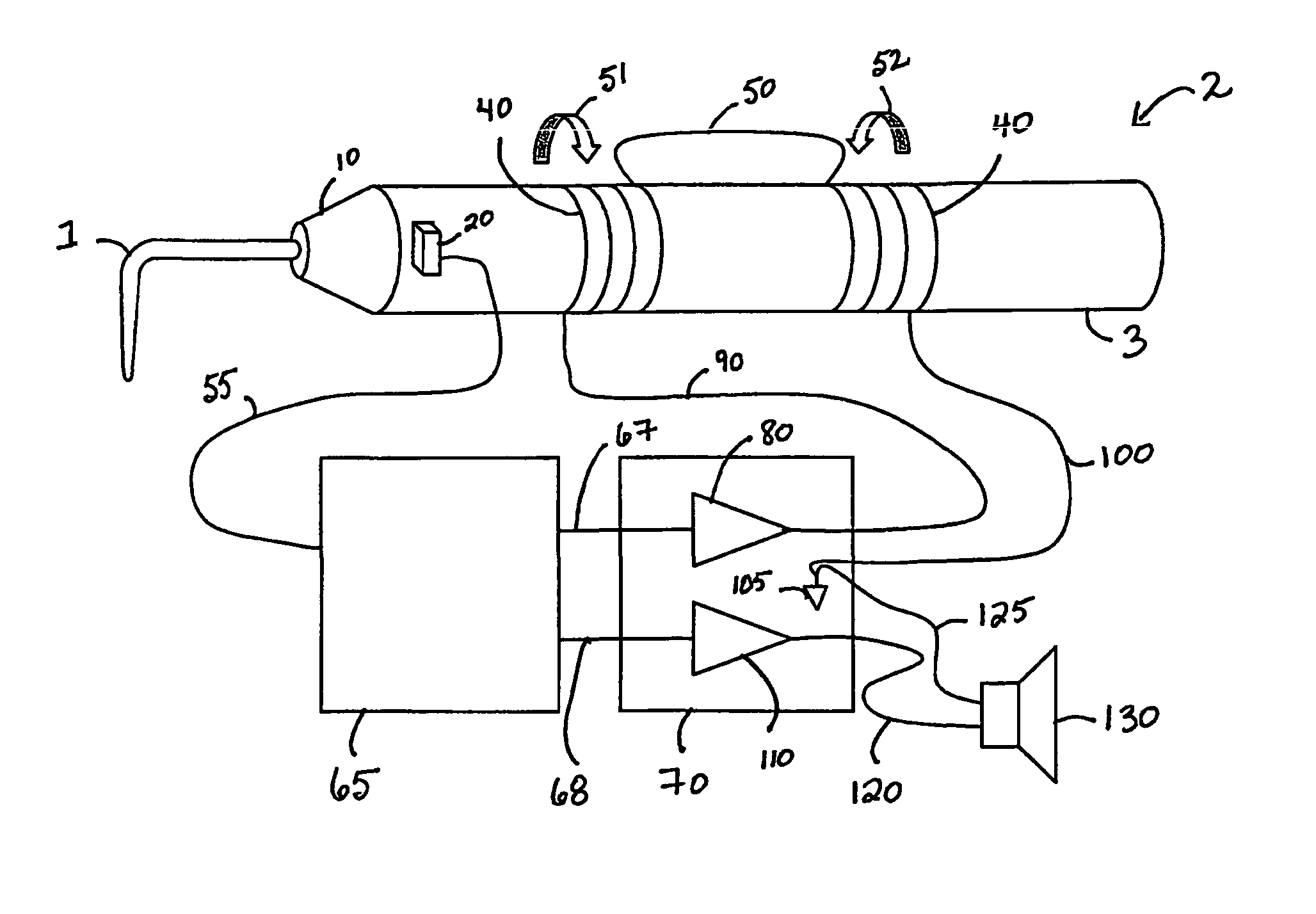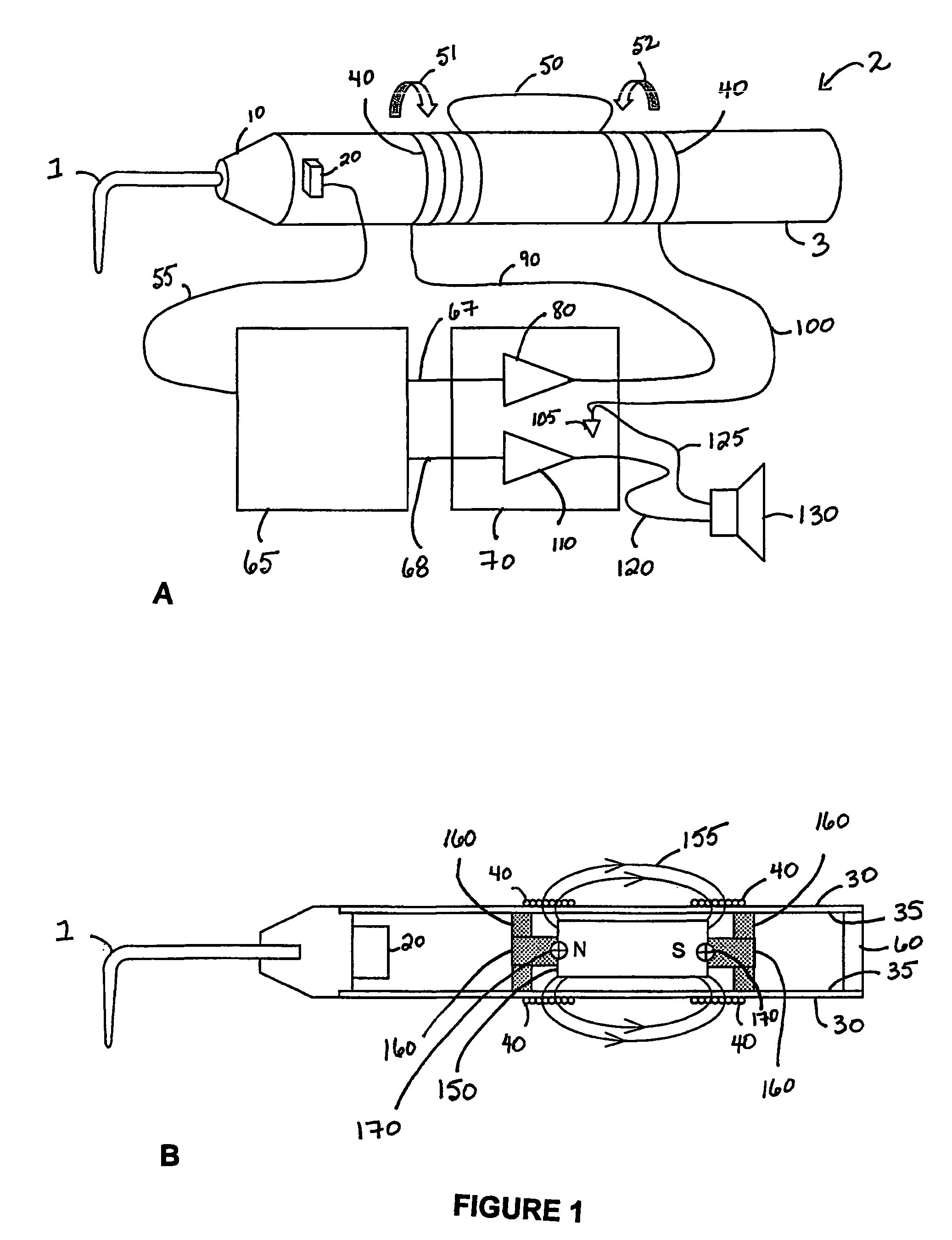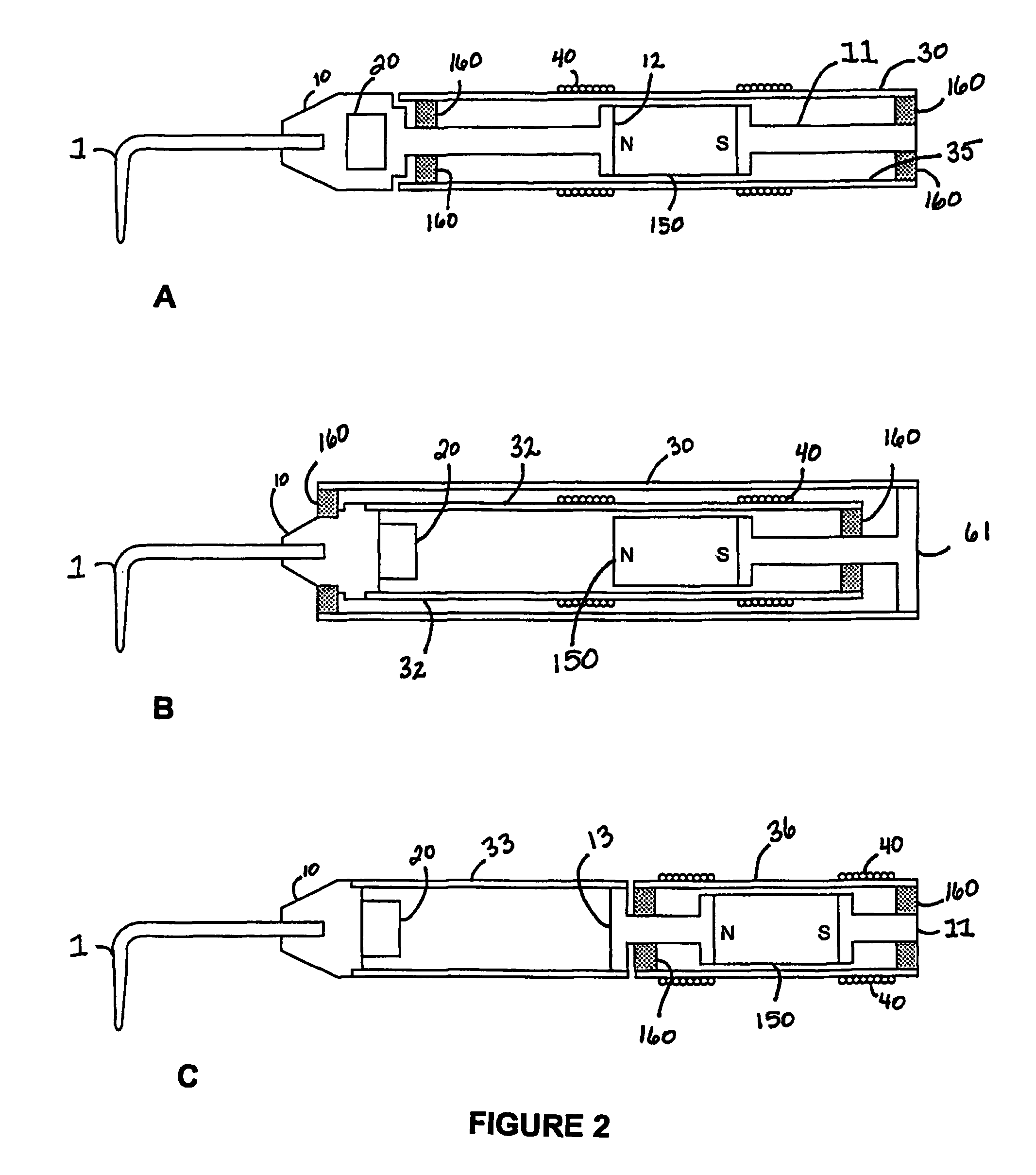Tactile amplification instrument and method of use
a technology of amplification instruments and instruments, applied in the field of surgical tools, can solve the problems of reducing the visual information of the tissue, requiring little or no direct tactile information for surgeons, and requiring minimally invasive surgery
- Summary
- Abstract
- Description
- Claims
- Application Information
AI Technical Summary
Benefits of technology
Problems solved by technology
Method used
Image
Examples
example
[0069]A prototype of the tool of the invention was built and tested as described below. This tool had a biocompatible metal hook fixedly attached to a cap made of Delrin plastic. The cap was securely inserted into a hollow handle. The handle was made from carbon fiber tubing and was 15 mm in diameter and 180 mm in length. A 2 g dual-axis accelerometer (ADXL311, available from Analog Devices (Norwood, Mass., U.S.A.)) of dimensions 5 mm×5 mm×2 mm was securely placed inside the hollow handle such that it was in constant contact with the cap in which the tool metal tip was embedded. An actuator was created by inserting a magnet (NdFeB) into the hollow handle and attaching the magnet by screws at either end to two pieces of rubber membrane that were attached by glue to the interior walls of the handle. In this way, the magnet was suspended in the middle of the handle and was not in direct contact with the interior walls of the handle.
[0070]Two sets of wire coils were wrapped around the c...
PUM
 Login to View More
Login to View More Abstract
Description
Claims
Application Information
 Login to View More
Login to View More - R&D
- Intellectual Property
- Life Sciences
- Materials
- Tech Scout
- Unparalleled Data Quality
- Higher Quality Content
- 60% Fewer Hallucinations
Browse by: Latest US Patents, China's latest patents, Technical Efficacy Thesaurus, Application Domain, Technology Topic, Popular Technical Reports.
© 2025 PatSnap. All rights reserved.Legal|Privacy policy|Modern Slavery Act Transparency Statement|Sitemap|About US| Contact US: help@patsnap.com



